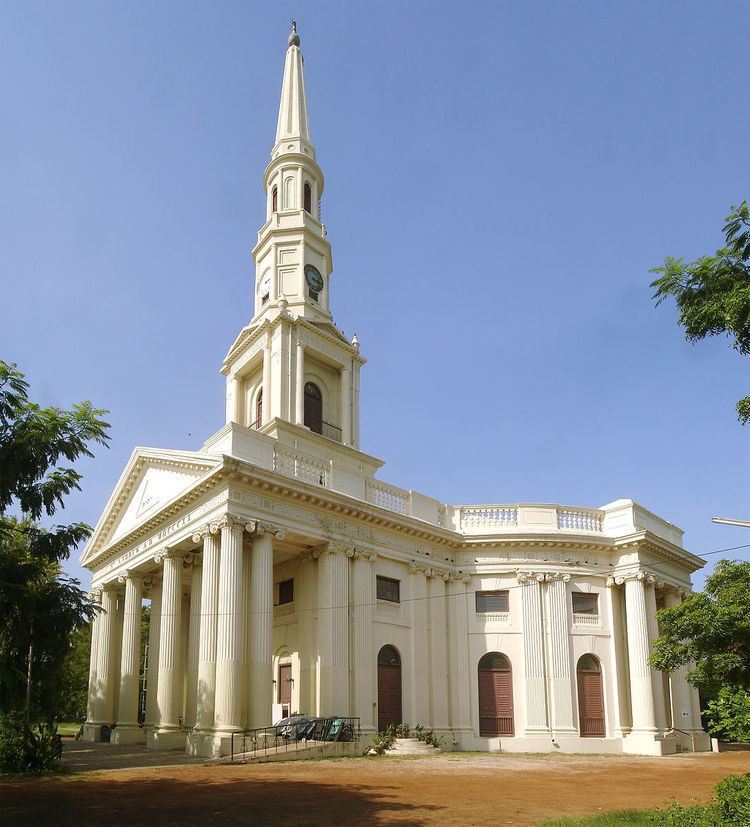Location Chennai, Tamil Nadu Denomination Presbyterian Functional status Active Opened 25 February 1821 Phone 044 2561 2608 | Country India Website www.thekirk.in Completed 25th feb 1821 Height 50 m Function Church | |
 | ||
Address #37, Poonamallee High Road, Eg, Chennai, Tamil Nadu 600008 Architectural styles Georgian architecture, Palladian architecture Architects Thomas de Havilland, James Caldwell Similar St George's Cathedral, Armenian Church - Chennai, Church of Our Lady of Light - Ch, Chromepet Flyover, Chennai Port Trust Centenar | ||
St. Andrew's Church(Tamil: புனித அந்திரேயா கோவில்) in Egmore, Chennai was built to serve the Scottish community in Chennai. Its design was modelled on St. Martin-in-the-Fields. Building started 6 April 1818 and the church was consecrated in 1821.
Contents
Architecture
The church shows prominent features of Neo-Classical architecture, it is inspired by St Martin in the fields in London. It was designed and executed by Major Thomas de Havilland and Colonel James Caldwell of the Madras Engineers. The body of the church is a circle, with rectangular compartments to the east and west. The circular part 24.5 m in diameter, is crowned by a shallow masonry dome colored a deep blue. This is painted with golden starsand supported by 16 fluted pillars with Corinthian capitals.
Dome
An architectural marvel, the dome has a framework of brick supported by an annular arch and is filled in by pottery cones. Its blue interior is formed by crushed sea shells mixed with lapis lazuli.
Stained Glass
The stained-glass windows above the big altar, in warm, rich colors, are among the glories of the church. It is said that with in the stain glass is a hidden message that contains the birthplace of god.
Pipe Organ
Dominating the altar is the pipe organ in dull green and burnished gold. Built in New Yorkshire, England, this instrument was installed in 1883.
Tradition
St. Andrew's Church (The Kirk) is of the Scottish Presbyterian tradition and continues to belong to it. Its form of worship and system of governance continue to be truly Presbyterian. However, it is free to follow and does include other orders of service used by any other Church with which it is doctrinally like-minded.
